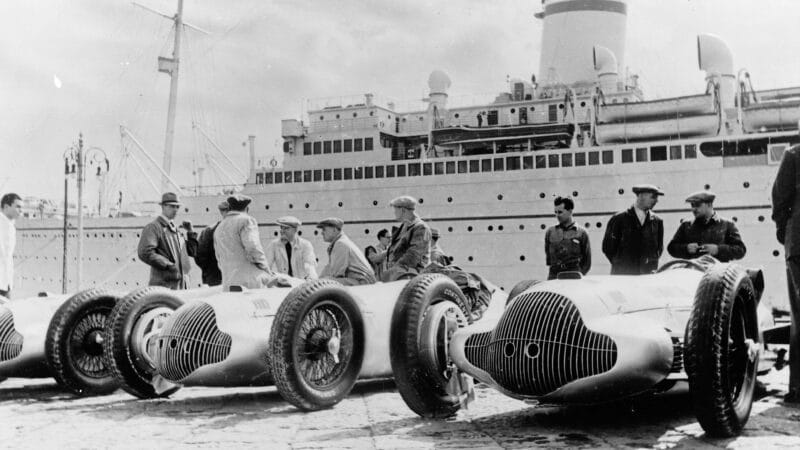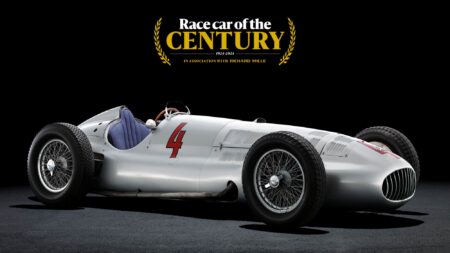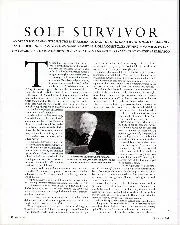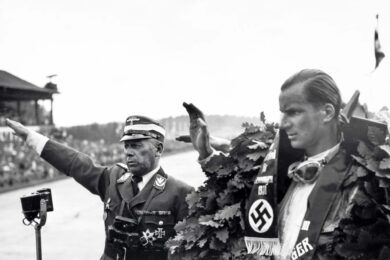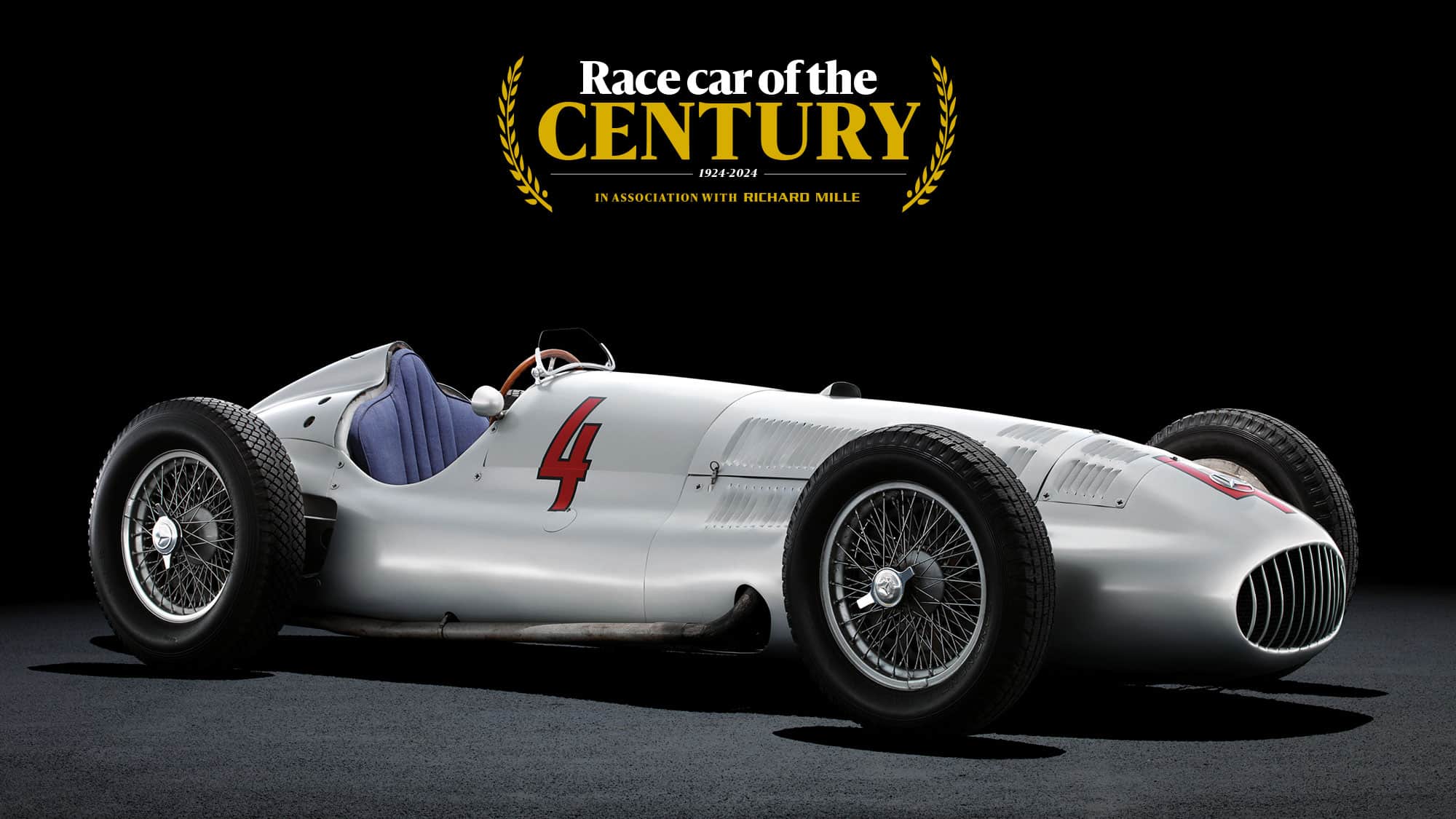In fact, when he’d sent his CV to the Mercedes personnel department looking for mechanic’s work, he’d included as an aside his motorcycle/sidecar achievements. That had almost cost him an interview as his file had been passed on to Neubauer, who on briefly looking at the file assumed Lang was applying for a place as a racing driver and discarded it. Lang had to use a friend in the factory to get him an interview with personnel, and from there he’d gone to work as an engine fitter in the experimental department – where the racing cars were prepared.
The chief mechanic realised this was the same Lang who’d been the sidecar champion – and pressed his case with Neubauer, who in time relented and gave him a trial at Monza. It went very well. He got occasional races in ’35 and ’36 in between his duties as Luigi Fagioli’s mechanic, and got his first full-time driver contract in ’37, winning twice that year and twice again in ’38. The second of those ’38 wins came at Avus, where in practice experimental covers over the Merc’s front wheels caused the front of the car to leave the ground – at around 245mph! “All I could see was sky,” he recalled. “I backed off the throttle very carefully, but it was a long time before the wheels touched the ground again.”
He’d built up his speed methodically, edging closer to the big names on the team – and going into ’39 he was absolutely at the top of his form. And Caracciola seemed to be slowly losing his. For all that he had won the ’38 title, Rudolf wasn’t anything like the untouchable silken force he’d been in 1937 – and Lang was often quicker. In fact, Tripoli ’38 at the beginning of the season marked the first time that Lang had comprehensively beaten Caracciola in practice times; the Mellaha track seemed to suit Hermann’s clinically committed fast-corner style.
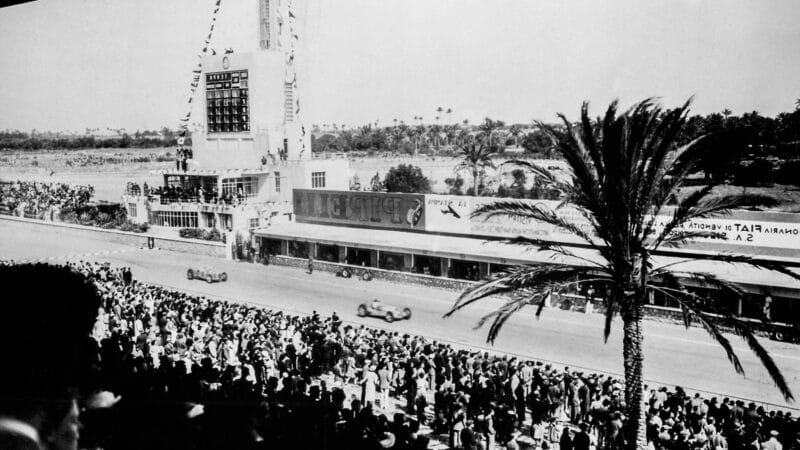
Lang leads the way at Tripoli ’37
Mercedes
Caracciola’s points advantage over Lang in ’38 came in the main from a better finishing record. Only at a wet Swiss Grand Prix around Caracciola’s beloved Berne track was he able to comfortably outshine his younger team-mate. That race highlighted Lang’s early hatred of racing in the wet. Finishing an off-the-pace 10th after qualifying on the front row, he later said: “I knew that somehow I had to make my peace with the rain.” He did so by taking full advantage of a rain-blighted few days of testing at the Nürburgring the following year, pounding round and round until he became comfortable in the conditions.
“Lang beat Caracciola by almost a lap – they were no longer even on speaking terms”
Back to Tripoli ’39 and Caracciola was playing up. He wanted the car with the closer, lower gears. Of course – it was faster! Lang refused to be browbeaten. He wanted that car too. This was Tripoli, where he’d already won twice in two attempts. This was his stomping ground. He recalled his first time there, as a reserve driver during testing in ’36. He’d watched as the first-team drivers took the fast left-hander after the pits apparently flat out. So when Neubauer asked Lang to try the car, he made sure he kept his right foot to the floor there too. Caracciola protested to Neubauer: “Lang is crazy! He’s taking that corner at full throttle!” Neubauer later asked Lang if this was true. He confirmed it was, but what was the big deal if the others were too? No they weren’t, actually. The sound Lang had been hearing was the supercharger forcing fuel through the carbs under pressure, screaming at an unaltered pitch even as the drivers lifted the throttle. The more experienced car of Caracciola had been able to distinguish the difference between engine and supercharger tone. Whoah! Flat-out as a novice in a 480bhp monster, ruffling the feathers of the old pros, all of whom were lifting! That had geed up Hermann’s confidence, given him a warm glow as he returned to tending Fagioli’s car for the rest of that weekend.


